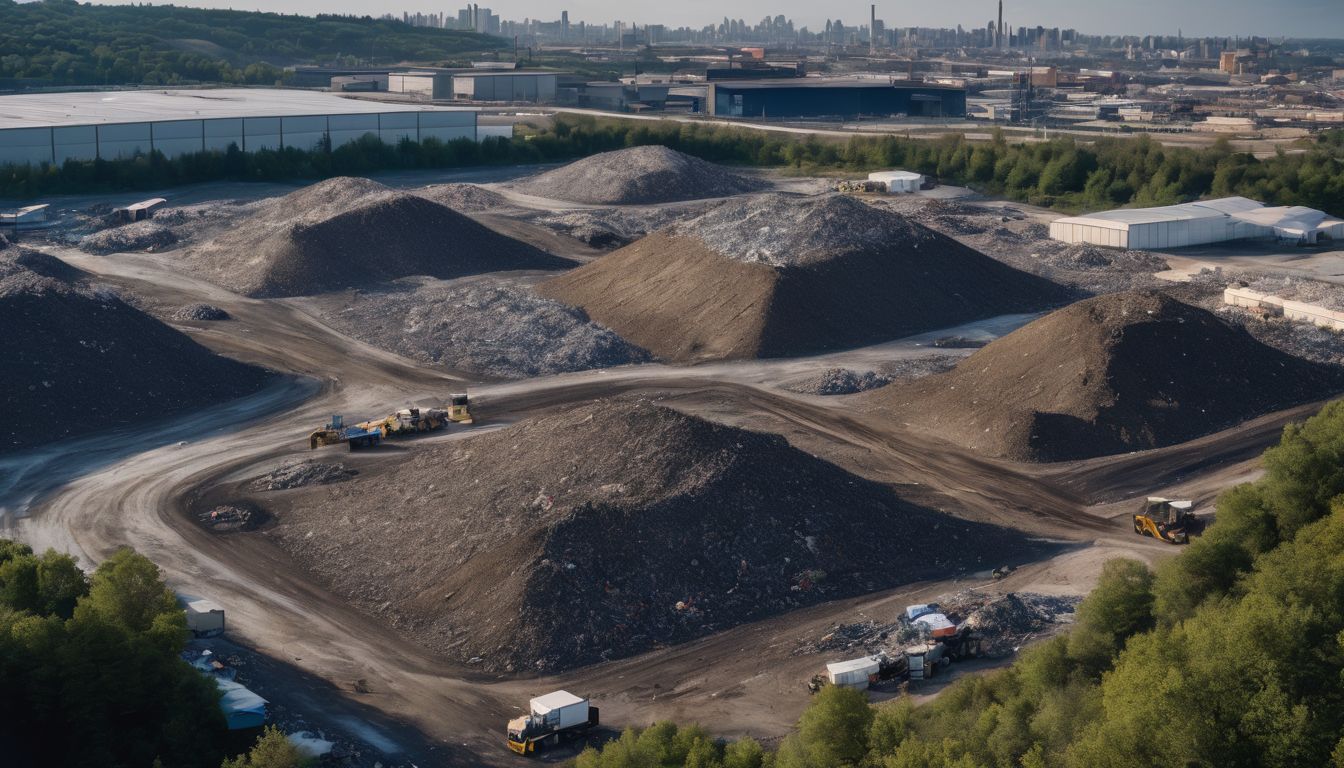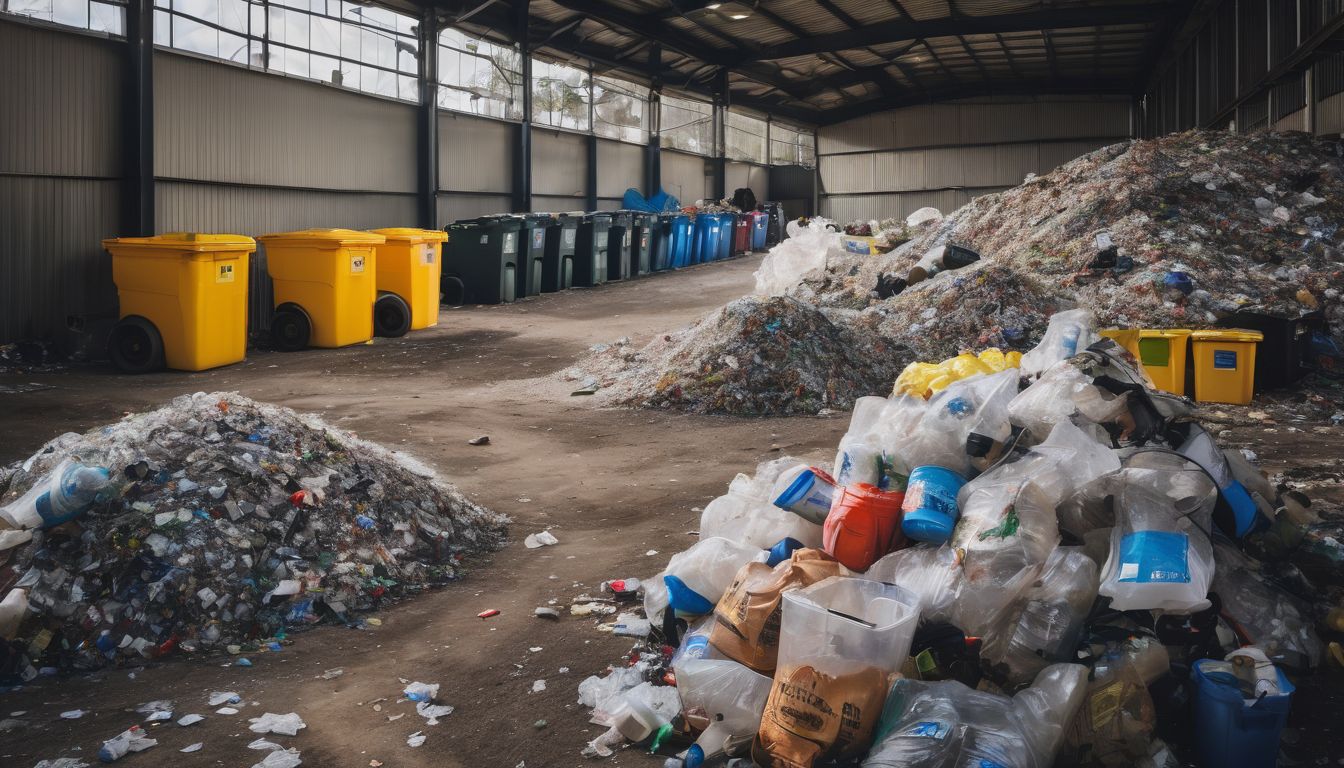Why conduct a waste audit of your facility? There are two primary purposes:
- To understand what types of waste are being generated and thrown away at your facility, prior to designing your new waste management system. You will want to learn the proportions of organics, recyclables, and landfillable trash, as well as common items that will be confusing for users to categorize properly.
- To assess the success of your new waste management system after you have implemented your new program by calculating the contamination rates (amount of waste in a bin that doesn’t belong—e.g. plastics in an organics/compost bin) and monitoring of items that are consistently being thrown away in the wrong bin.
BENEFITS FOR THE ENVIRONMENT:
A waste audit will ensure that your new waste management system is optimized for success, allowing it to be as efficient and as user-friendly as possible. With a well-oiled system in place, you will allow all the users of your building to participate and contribute to a greener world.
BENEFITS FOR YOUR WALLET/THE ECONOMY:
Conducting continual audits will ensure you are maximizing your investment in this new system, and allow you to tweak it as appropriate for maximum efficiency. Properly designed, these new systems should lower your hauling fees for your landfillable trash, while increasing your streams of valued waste—recyclables and organics/compostables.
Costs: Medium to high. Depends on which level of bureaucracy you ask!
Time and Effort: High
Materials
- Scale
- Sorting area with tarps—can be on the ground or a table
- Protective gloves
- Garbage bags
- Camera
- Plastic Buckets that can fit on the scale
The waste audit will take place over one business day. Be careful to not let anyone know that you are conducting an audit ahead of time!
Steps
Before the Audit:
- Convene a working group with appropriate stakeholders—facility manager, operations manager from any retail stores, janitorial staff, auditor leaders.
- If you want to know specific numbers for each bin, you will have to label the bags at each of these bins. Using a building map, develop a numbering scheme to correspond with bin locations, and then label sets of bags accordingly. You will need to work closely with janitorial staff to maintain this throughout the day. A suggestion: place all of the labeled bags at the site of each bin ahead of time, so the janitorial staff can simply take away a filled bag and replace it with a bag already at the bin site.
- Assemble a team of volunteers to help you conduct the actual sort. Some selling points: provide free t-shirts, market the good hands-on experience from volunteering, and helping the environment (waste reduction and proper diversion can correlate with actual GHG emission reductions). Make sure that your volunteer team doesn’t tell anyone when the audit will occur and make sure they are prepared to wear appropriate clothing that can get dirty on audit day ☺
- Create a loading zone where all of the bags can be placed throughout the day. You don’t want the audited bags to be mixed with the regular waste stream from the rest of the week.
- Ensure everyone involved has as a clear understanding of the audit procedures and is able to communicate the instructions to their staff.
During the Audit:
- Collect the bags from the collection zones and transport to a sorting area.
- Set up the sorting area by laying out a plastic tarp and any tables with plastic sheeting as well.
- Ensure that your volunteers are dressed appropriately—closed toed shoes, rubber gloves, hair pulled back, safety glasses if necessary, and clothes that can get dirty.
- Set up the scale and tare/zero it (set the scale to zero when an empty plastic bin is on it).
- Pass out instructions and waste audit forms (a sample form is provided at the end of this guide), pens, and clipboards for recording, as well as gloves for use during sorting and cleaning supplies for after the sorting. Go over the instructions and the process to ensure accuracy, fun, and safety.
- If you labeled bags according to bin, sort all the bags from each bin at once. Additionally, if you are interested in contamination rates, you will need to sort the different types of bins separately as well (recyclables, organics/compost, trash/landfill).
- Once you have set up your sorting system (which will depend on the data you are interested in), spread out the bags over the large plastic sheet, and then sort the waste appropriately into the plastic buckets.
- Weigh each sorting container, ensuring that the scale has been tared/zeroed.
- Record the data as appropriate, taking notes of specific trouble items.
- Take pictures of the piles to document the audit and use in your report.
- Clean up the sorting area.
After the Audit:
- Compile your data into a user-friendly report.
- Use this report to influence the design of your waste management system or to tweak an existing system. Soon to come is a Greeniacs guide to creating a full-fledged waste diversion program, and in the meantime start preparing with this recycling guide.
Enjoy! Hope you had fun. If you get good at it, they are also a fun awareness event. Nothing makes people notice their waste more than when it’s right in front of them. One dining hall even created a table of champions, where they placed the most wasteful plates of food to highlight the incredible behaviors of its diners.
**Sample Waste Audit Form
| Bin Type | |||||
| Bin name | landfill | recycling | compost | ||
| Actual pounds of… | landfill | xx | xx | xx | |
| recycling | xx | xx | xx | ||
| compost | xx | xx | xx | ||
| Location details: | |||||
| Bin Type | |||||
| Bin name | landfill | recycling | compost | ||
| Actual pounds of… | landfill | xx | xx | xx | |
| recycling | xx | xx | xx | ||
| compost | xx | xx | xx | ||
| Location details: | |||||
| Bin Type | |||||
| Bin name | landfill | recycling | compost | ||
| Actual pounds of… | landfill | xx | xx | xx | |
| recycling | xx | xx | xx | ||
| compost | xx | xx | xx | ||
| Location details: | |||||
| Bin Type | |||||
| Bin name | landfill | recycling | compost | ||
| Actual pounds of… | landfill | xx | xx | xx | |
| recycling | xx | xx | xx | ||
| compost | xx | xx | xx | ||
| Location details: | |||||
| Bin Type | |||||
| Bin name | landfill | recycling | compost | ||
| Actual pounds of… | landfill | xx | xx | xx | |
| recycling | xx | xx | xx | ||
| compost | xx | xx | xx | ||
| Location details: | |||||




